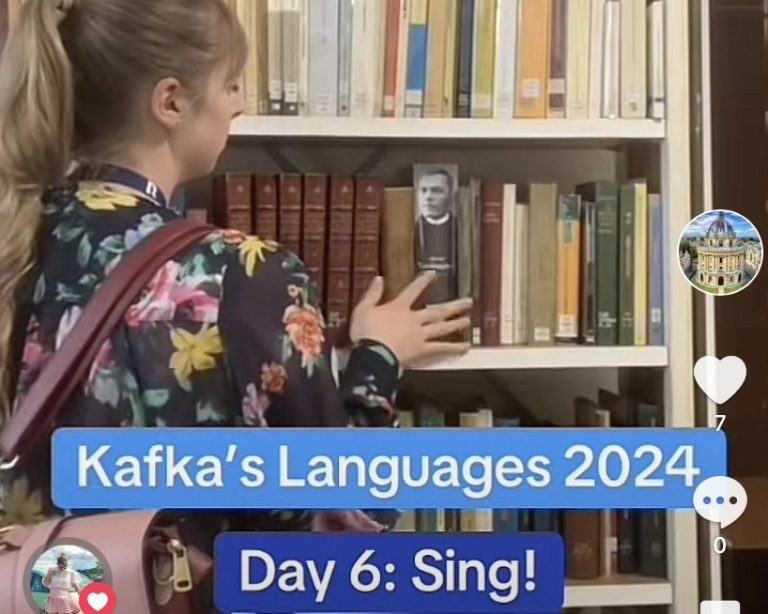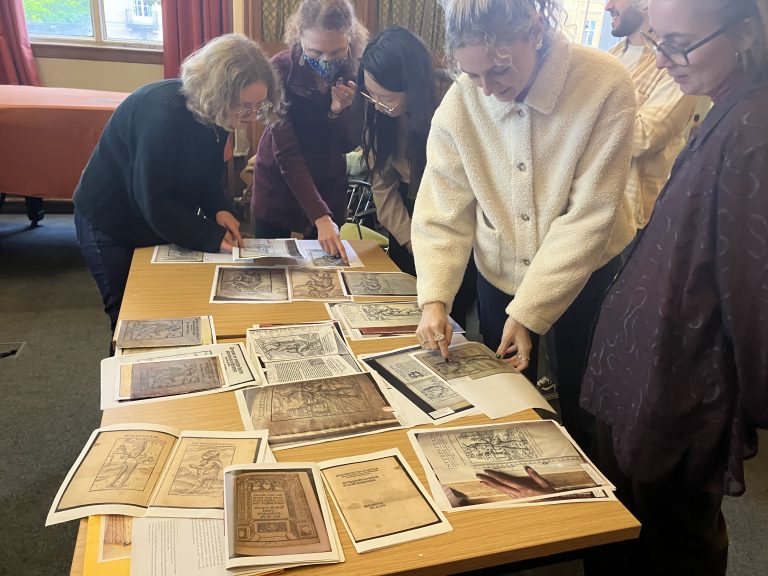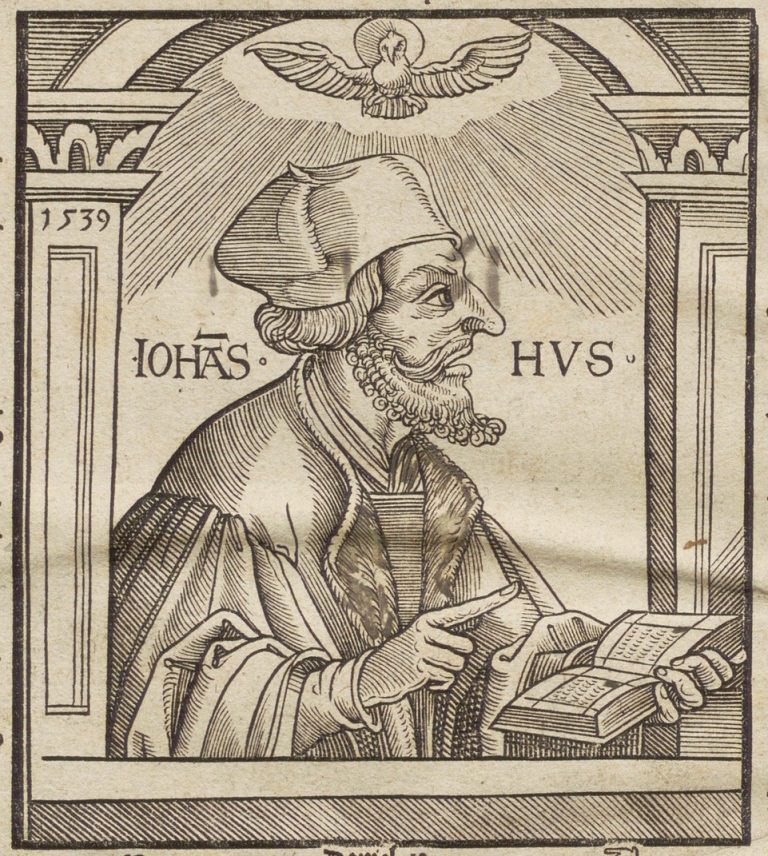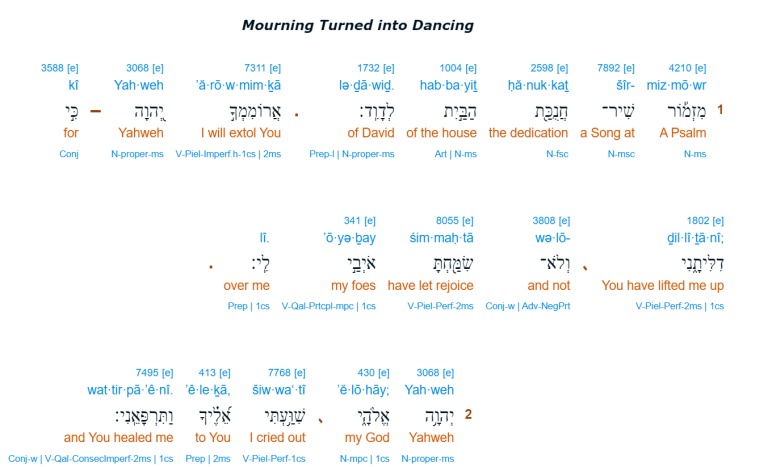Update: The full edition launched on Friday, 28 November 2025 in Room 2 of the Taylor Institution Library. It comprised a historical and bibliographic introduction as well as the edition, translation, and facsimile. Sneak preview of the volume here and a preliminary audiobook of the text here. The Studienstiftung Sommerakademie came together for a week …
Category: Digital Humanities
‘Big Data’ and Medieval Manuscripts
Are you curious about what manuscripts can tell us beyond their texts? Join Digital Scholarship @ Oxford and the Bodleian Libraries for a hands-on workshop using data from manuscript catalogues to explore trends and patterns in medieval manuscript production. You’ll learn: You’ll have the opportunity to work directly with manuscripts from the Bodleian’s collections, learning …
History of the book vs the (digital) world
By Matthew McConkey As anyone who has grappled with Single Sign-on can attest, humanities researchers and IT are often uneasy bedfellows. It was this perceived <div>ide that the 2024 history of the book students confronted last Wednesday: just what hides behind the intimidating pseudonyms ‘XML’ and ‘TEI?’ Luckily, we had an expert guide in Emma …
Seeing Materiality through a Computer’s Eyes
Following our foray into textual encoding last week, Dr Giles Bergel joined us from the Visual Geometry Group (https://www.robots.ox.ac.uk/~vgg/) to talk about book-historical uses of computer vision. Originally trained as a book historian, Dr Bergel gave us an overview of the theory behind it, how it has been used in humanities projects, and what computer …
TikTok and TEI: A Taylor Editions Practicum
One of the Taylor Editions practicum placement students from the MSc in Digital Scholarship programme writes on creating different TikTok series inspired by the “Epic!: Homer and Nibelungenlied in Translation” and “Kafka’s Languages” exhibitions, as well as creating her own digital edition of a text inspired by the Kafka exhibition, displayed in the Voltaire Room at the Taylor Institution Library from 29 May–13 June.
Language Learning through TEI/XML: A Digital Edition of a Slovak Language Learning Notebook
One of the Taylor Editions practicum placement students from the MSc in Digital Scholarship programme writes on creating a digital edition of her own Slovak language learning notebook. Visit Kafka’s Languages in the Voltaire Room, Taylor Institution Library from 29 May–13 June to see the exhibition that inspired this project. For the 2022–23 academic year, …
Multilingual Monkcalves and Manuscripts. Working as Intern at Oxford
During Michaelmas Term 2023, Kira Kohlgrüber (Frankfurt) and Karen Wenzel (Augsburg) worked as research interns with Henrike Lähnemann. Here Kira reports on behalf of both of them on highlights of their time in the city, on working with manuscripts, Reformation pamphlets, and xml, and being part of the History of the Book group at the …
Digital Tools for History of the Book: Image Matching
By Tianyi Liu (MSt in Modern Languages) On 8 November 2023, as a prelude to the launch of the e-ilustrace database of early printed Czech books (https://e-ilustrace.cz/en/), Dr Giles Bergel treated the History of the Book class to a fascinating session on image matching technology. Giles Bergel trained as book historian and now works in …
Illuminating the Past: Czech Printed Images during the Reformation (c. 1450-1550) and the ‘e-ilustrace’ Database
A Presentation by Veronika Sladká One hundred years before Martin Luther’s arrival, the Reformation had already established itself in One hundred years before Martin Luther’s arrival, the Reformation had already established itself in Bohemia, resulting in a significant aversion towards sacred images. Nevertheless, bibliographical records suggest that around 6,000 printed images had been disseminated through …
Sola Scriptura, sed quomodo scriptum?
The Presentation of Holy Texts Wilfried Kuugauraq Zibell, MSt. Yiddish Studies In the beginning was the Word, and the Word was with God, and the Word was God. – John 1:1 (KJV) The relationship between the written word and religion is, for the Abrahamic faiths and the regions where they have historically predominated, inextricable. The …







